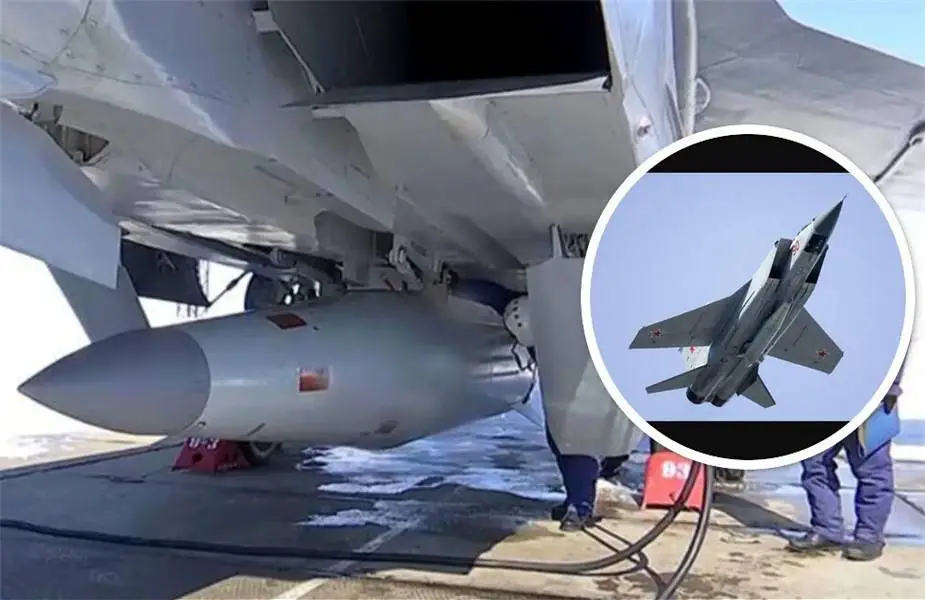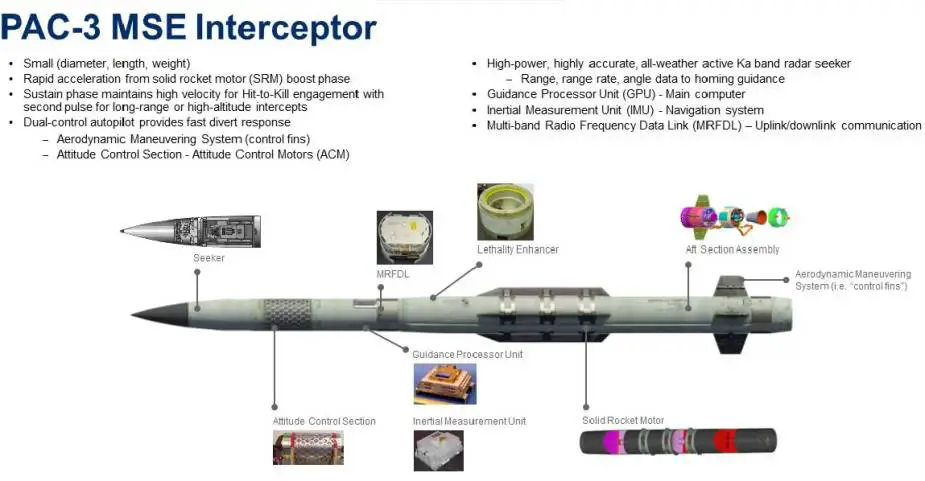During a press briefing that was held on May 9, 2023, Brigadier General Pat Ryder, U.S. Pentagon Press Secretary confirmed that the Ukrainian armed forces did down a Russian Kh-47 Kinzhal nuclear-capable hypersonic missile by employing the Patriot air defense missile system. As a hypersonic missile, the Kh-47 Kinzhal is considered a non-interceptable missile by current modern air defense systems.
Follow Army Recognition on Google News at this link

The Kh-47M2 Kinzhal is a Russian air-launched hypersonic missile system. (Picture source Russian social network)
Citing information from Brigadier General Pat Ryder, there is no official information if the Kh-47 Kinzhal hypersonic was shot down by a Patriot air defense missile delivered by the United States, Germany, or the Netherlands. According to our knowledge, only the PAC-3 MSE missile will be able to intercept hypersonic missiles, but there is no official information about the delivery of this version of the Patriot to Ukraine.
Hypersonic missiles are difficult to intercept due to several reasons. First, their incredible speed makes it challenging for traditional missile defense systems to track, engage, and intercept them in time. The short reaction time available to detect and respond to a hypersonic missile launch limits the options for defense.
Second, the missiles' ability to maneuver and change trajectory during flight makes them less predictable, further complicating interception efforts. Hypersonic missiles can evade radar detection and make it difficult for defense systems to maintain a lock on their targets.
Third, hypersonic missiles typically fly at altitudes between the Earth's surface and the upper atmosphere, a region known as the "boundary layer." This flight path allows them to avoid some radar systems and makes it more challenging for defense systems to acquire and track them.
Lastly, the hypersonic missiles' speed generates intense heat due to the friction with the atmosphere, which can potentially damage or confuse sensors that are trying to track the missile. This makes it even more difficult for defense systems to maintain accurate tracking and successfully intercept the missile.

The Kh-47M2 Kinzhal is a Russian-made hypersonic missile that has a range of approximately 2,000 km. (Picture source Russian social network)
The Kh-47M2 Kinzhal is a Russian air-launched hypersonic missile system, which translates to "Dagger" in English. It was first revealed by Russian President Vladimir Putin during his annual State of the Nation address on March 1, 2018. The Kinzhal missile is based on the Iskander ground-launched short-range ballistic missile and has been adapted for air launch by the MiG-31K interceptor aircraft, as well as potentially other aircraft in the future.
The Kinzhal missile has several notable features and combat capabilities. Its speed is reported to reach up to Mach 10, which is approximately 7,680 miles per hour or 12,348 kilometers per hour. This high speed allows the missile to penetrate enemy air defenses and deliver its payload with minimal warning time.
The missile has a range of approximately 2,000 km (1,200 miles), giving it the ability to strike targets deep within enemy territory without the launch aircraft needing to enter hostile airspace. This extended range is particularly valuable when targeting high-value or heavily defended targets.
The Kinzhal missile has a nuclear and conventional payload capability, which makes it a versatile weapon that can be used in various combat scenarios. The missile's nuclear option enhances its strategic deterrence capabilities, while the conventional payload option allows for more limited and precise strikes.
One of the key features of the Kinzhal missile is its ability to maneuver during flight. This ability, combined with its hypersonic speed, makes it difficult for enemy air defenses to intercept and significantly increases its survivability. The missile's unpredictable flight path also complicates the task of missile defense systems, giving it a higher probability of successfully reaching its target.

The PAC-3 MSE (Patriot Advanced Capability-3 Missile Segment Enhancement) is an upgraded version of the PAC-3 missile, designed for improved air and missile defense capabilities.
The PAC-3 MSE (Patriot Advanced Capability-3 Missile Segment Enhancement) is an upgraded version of the PAC-3 missile, which is part of the Patriot air and missile defense system. The PAC-3 MSE introduces several improvements to the original PAC-3 missile, enhancing its capabilities to better address evolving threats, including increased range, better maneuverability, and more robust performance against advanced threats.
One of the key improvements of the PAC-3 MSE missile is its extended range compared to the previous PAC-3 version. This increased range allows the missile to defend against threats from greater distances, offering better protection for the defended area.
Another enhancement is the missile's improved maneuverability. The PAC-3 MSE is equipped with a larger, more powerful dual-pulse solid rocket motor, which enables it to change direction more quickly and precisely. This increased agility allows the missile to intercept highly maneuverable targets, including advanced aircraft, cruise missiles, and potentially hypersonic missiles.
The PAC-3 MSE also features an upgraded seeker, which improves the missile's ability to detect and track targets, even in challenging environments or situations where the target is attempting to evade detection. This improvement helps the missile system to engage and defeat advanced threats more effectively.
Overall, the PAC-3 MSE missile provides a more capable defense against a broader range of air and missile threats compared to its predecessor. Its enhanced range, maneuverability, and seeker technology make it a more effective solution to counter evolving threats in modern warfare.















